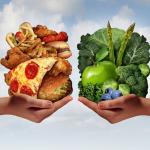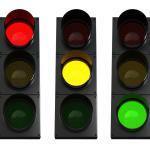I have always thought that real-time help in making food choices can move us towards “better” ones, especially when motivated by saving a little green as you eat more green. So I was eager to see the findings of this study.
food choices
Way back in 2005, we wrote about a survey indicating that Americans' knowledge of some food-related matters was incomplete.
What do you say when a pretty wacky idea is ostensibly promoted by a well-respected scientist? Well, you (politely) have to say that the idea is rather wacky.
The USDA announced last week that on-line providers of fresh food would begin participating in a pilot study with the Supplemental Nutritional Assistance Program (SNAP).
I've written before about the problems with changing people's behavior when it comes to making food selections with respect to
It's probably the biggest issue in the nutrition world — no, not the Fat vs. Carbs dispute — but how to motivate people to make healthy food choices.
Marketers have latched onto the Millennial generation (those aged 18-34) as though they were the source of all goodness.
For many of us, there's often a tug of war when making some food choices. Should we go for the yummy snack that's high in sugar/fat/calories, or opt for the healthier version?










